Samsung Galaxy S24 vs Galaxy A55: what’s the difference?
The two Samsung smartphones compared.
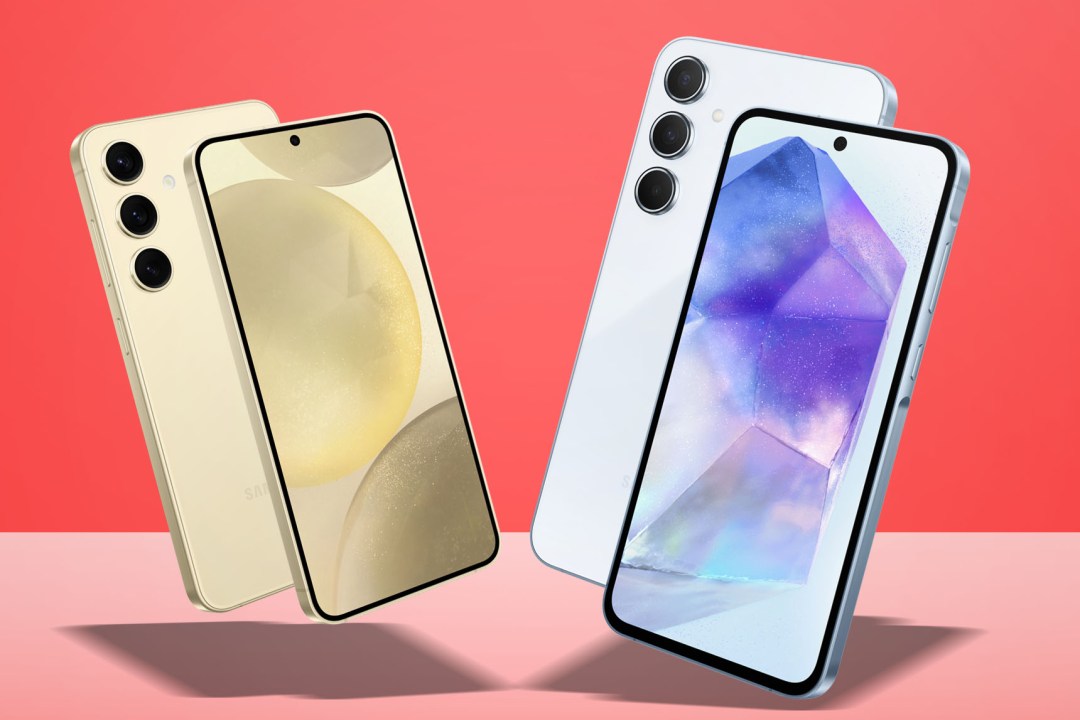
Samsung phone fans are spoiled for choice right now. The Galaxy S24 is where you’ll find the best performance, camera quality and AI smarts – but it comes at a high price. The Galaxy A55 is much more of a mid-range phone, but one that takes plenty of inspiration from its higher-end range mate.
To the untrained eye, there aren’t many differences between the pair: they look the same, both have home-grown Exynos CPUs, and have three rear cameras. There’s a lot more to it than that, though. While I’ve yet to try the Galaxy A55, I’ve pored over its spec sheet to work out exactly where it falls behind the Galaxy S24 – and in a few cases actually comes out on top.
Design & display: bigger, not brighter
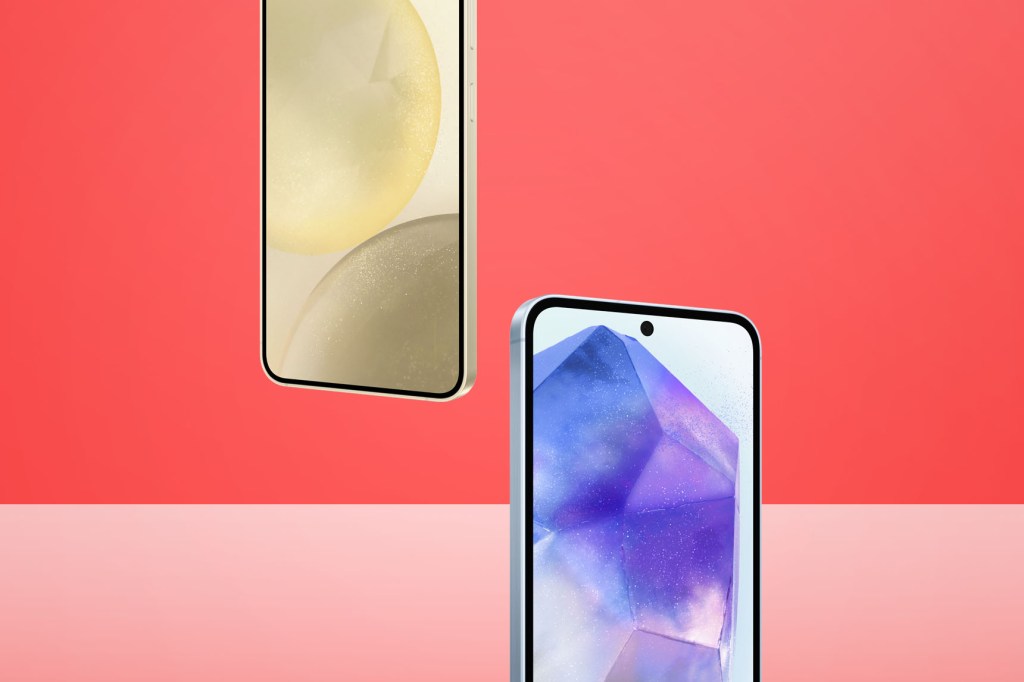
Let’s get the obvious out of the way first: the Samsung Galaxy S24 is a minnow to the Galaxy A55’s marlin, on account of its 6.2in display. The A55 has a much larger 6.6in panel, although both phones share the same 2340×1080 resolution and 120Hz maximum refresh rate.
The S24 uses one of Samsung’s Dynamic LTPO AMOLED 2X panels, which means it can drop as low as 1Hz in the name of power saving; the Galaxy A55 can only toggle between 60Hz and 120Hz. It can’t match the S24’s 2600nit peak brightness, either, maxing out at 1000nits in High Brightness Mode (HBM). Display bezels are thicker on the A55, too.
Glass protection is stronger on the Galaxy S24; it uses Gorilla Glass Victus 2 glass. The A55 uses the older Gorilla Glass Victus+, which isn’t quite so scratch resistant. They each should survive daily use as long as you take some common sense measures to keep them secure.
Beyond screen size, the other obvious physical difference is the Galaxy A55’s recessed power button/fingerprint sensor combo. The Galaxy S24 has an under-display fingerprint sensor instead. It also has a stronger ‘armor aluminium’ frame, which should hold up better to dents, drops and scratches than the A55’s untreated metal.
Both handsets feature a small punch-hole selfie camera on the front, and three vertical cameras on the reverse. Both also feature neat rounded edges and a typically Samsung design. Colour wise, the Galaxy S24 is available in Onyx Black, Marble Grey, Cobalt Violet and Amber Yellow colours just about everywhere; Jade Green, Sandstone Orange and Sapphire Blue are currently exclusive to the Samsung web shop. The Galaxy A55 is more restricted in its colour schemes, with it being available only in Ice blue, Lilac, Navy and Lemon.
Performance and battery: built different
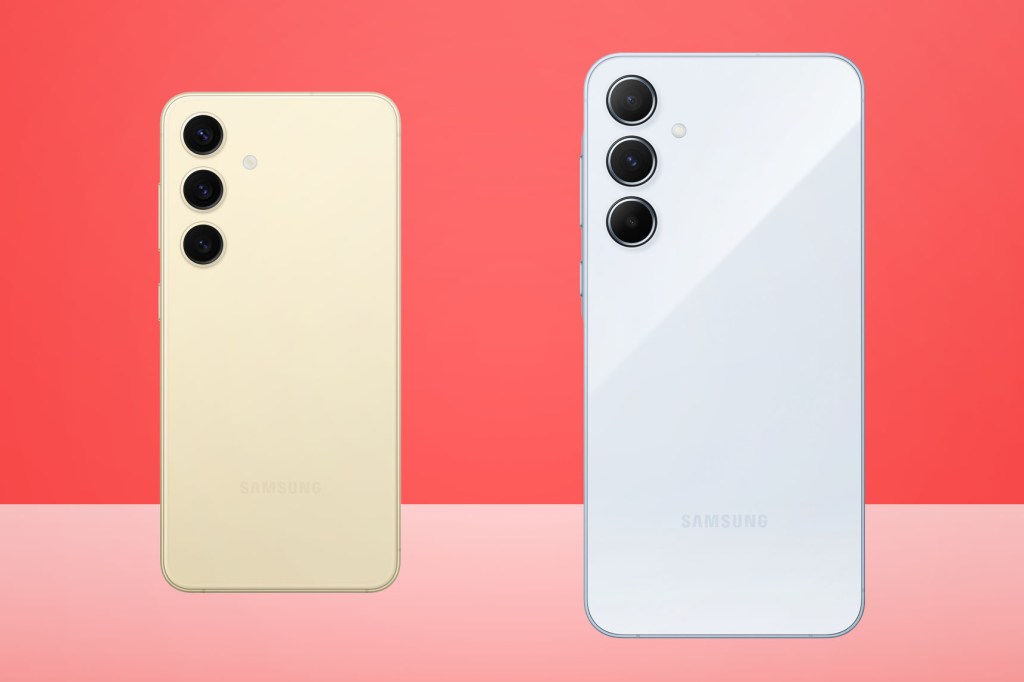
As a top-tier smartphone, it’s no shock that the Galaxy S24 is packing some potent hardware. UK and European variants have one of Samsung’s own Exynos 2400, while the US and other regions get a Qualcomm Snapdragon 8 Gen 3. Both have 8GB of RAM and either 128GB or 256GB of on-board storage, with no microSD expansion support. That’s more than enough grunt to tackle any Android app or game, and there’s even some AI acceleration going on under the hood too.
The Galaxy A55 gets an all-new Exynos 1480 chip; as the numbers suggest, lower means less powerful, putting this phone very much among the mid-range competition. It can be had with either 8 or 12GB of RAM, and 128 or 256GB of storage. It should feel smooth enough for daily duties, but expect to have to dial down the graphics settings on modern games. There’s no Galaxy AI on board here, either.
Unsurprisingly, the pocket-friendly Galaxy S24 doesn’t have as much room for battery cells as the larger Galaxy A55. It has a 4000mAh capacity, which in my experience is good enough to last the day – just about. 25W wired charging can deliver a 50% charge in half an hour, and there’s wireless charging on board as well. The Galaxy A55 can only be topped up over USB-C, but it matches the more expensive phone on speed at 25W. Its 5000mAh capacity could make it through two days if you’re sensible with gaming or how much you use the cameras.
Cameras: zoom vs macro
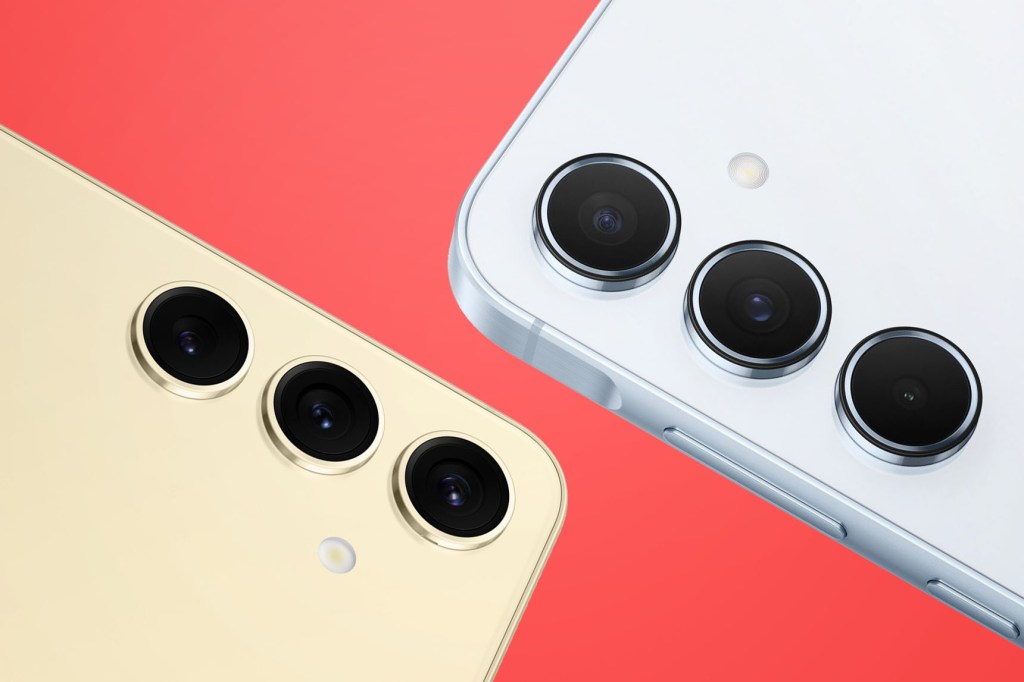
Samsung hasn’t tweaked the Galaxy S24’s camera very much from the previous generation. It’s packing a 50MP main snapper with an f/1.8 aperture lens, optical image stabilisation and dual pixel phase-detect autofocus, along with a 12MP, f/2.2 ultrawide and a 10MP, f/2.4 telephoto good for 3x optical zoom. There’s also a 12MP, f/2.2 selfie cam up front with dual pixel PDAF.
It may not be the very best cameraphone around any more, but the S24 can still take impressively colourful images in just about all lighting conditions. Computational photography helps out at night, and there’s an abundance of AI-powered editing tools – including generational expanding for if you’ve cropped in too tightly on your subject, and the option to remove unwanted reflections with a button press.
Those smarts don’t filter down to the Galaxy A55, which makes do with more traditional editing tools. It too has a 50MP, f/1.8 main camera and 12MP, f/2.2 ultrawide, though it’s unclear if the underlying sensors are identical to the S24’s. What’s for certain is the third lens is something completely different: a 5MP, f/2.4 macro shooter designed mainly for close-ups. Selfies come courtesy of a 32MP, f/2.2 camera on the front.
I thought last year’s Galaxy A54 performed admirably for a mid-range smartphone when it came to camera quality, so I’d expect a similarly impressive performance from the A55 – though that will have to wait for a full review. I can be sure that the S24 should be your first choice if you want a zoom lens, though.
Samsung Galaxy S24 vs Galaxy A55 initial verdict
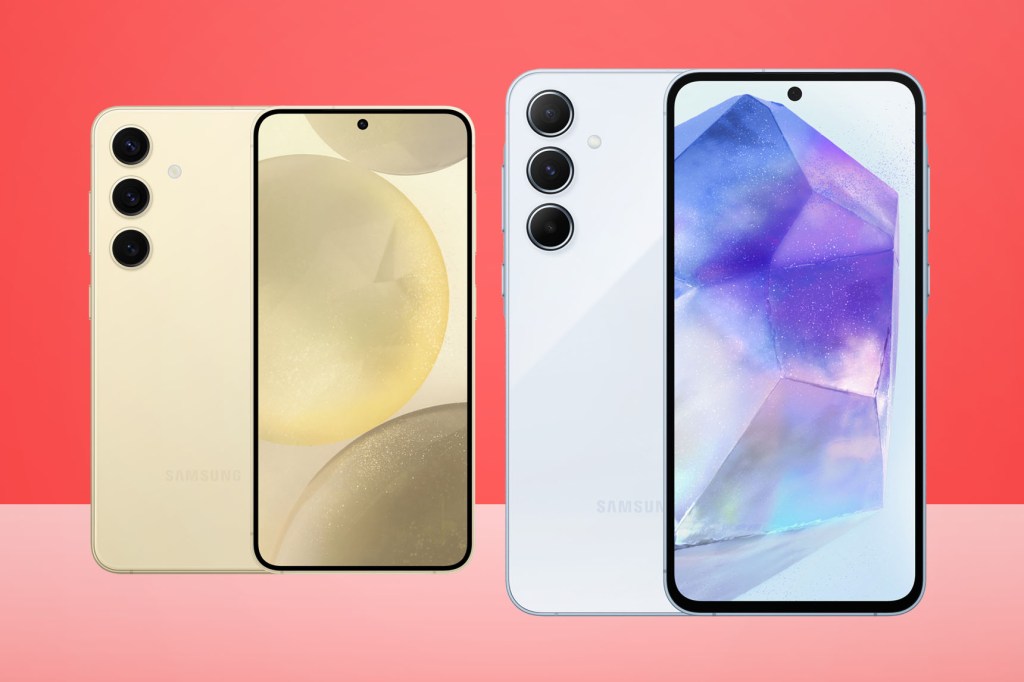
For a mid-range handset, the Samsung Galaxy A55 seems to offer speed, sleek design and some good camera oomph for your money. It even has a bigger (though not brighter) display and a larger battery than the S24. It will set you back £439/€480 for the 8GB+128GB version, if you buy directly from Samsung; that’s almost half the price of the S24.
Performance is almost certainly on the S24’s side, as is a brighter screen, more premium materials, and wireless charging. A zoom lens makes it the clear winner on the photography front, and Samsung’s Galaxy AI additions are really rather good. Yes, you’ll have to pay more – £799/€934 for the 8GB+128GB version if bought through the Samsung website – but I’m betting you’ll be glad you did in the long run.


